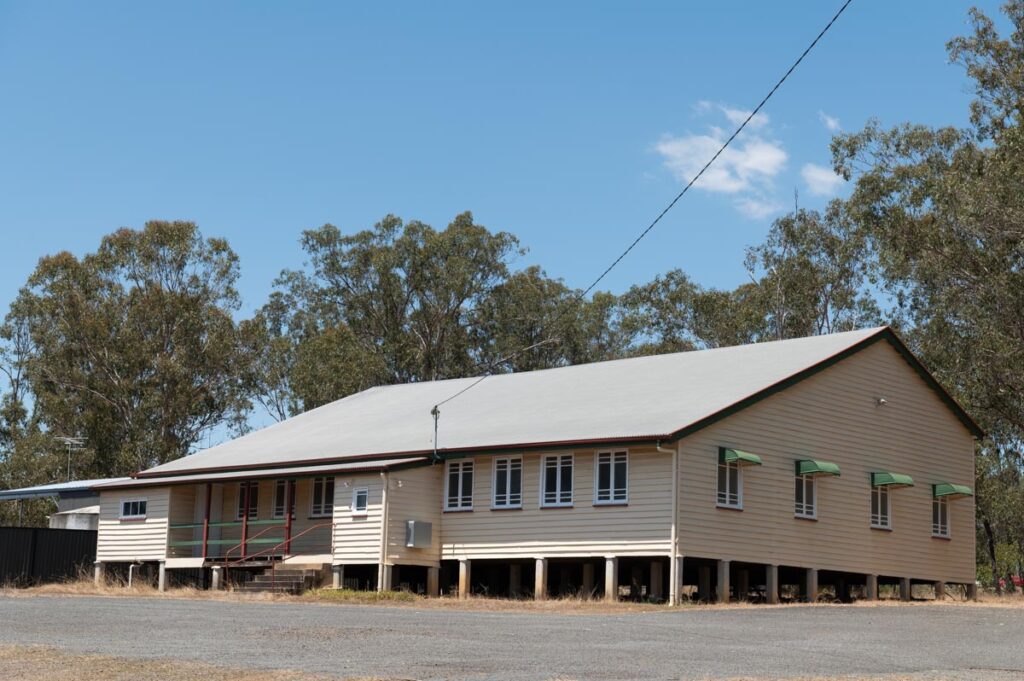
Pine Creek’s history extends back to the earliest European settlement of Bundaberg with Pine Creek Hall serving as a focal point for community gatherings.
Listed among Bundaberg Regional Council’s local heritage places, the building was opened in 1922 at a cost of £180 and demonstrates how the establishment of community halls in rural communities served as a focal point for social and cultural activities.
Pine Creek Hall reflects the closer settlement of the Pine Creek district and its growing population, stimulated by the proximity of the Bingera sugar mill and the construction by the mill of a tramway across the Burnett River into the Pine Creek area to its plantation there.
It is unclear precisely when the first settlers arrived in the district, but it appears to have been in the 1890s.
At this time the district was relatively isolated.
In the early twentieth century, the Bingera Sugar Mill opened a plantation in the district and when a tram bridge was constructed over the Burnett River, selectors began to plant sugar cane now that they had access to the mill.
Pine Creek Hall historical features
Pine Creek Hall is important in demonstrating the principal characteristics of community halls in the region constructed in the early 1900s, particularly the extensive use of timber and features such as a ticket office and a large internal space used for dances and other events.
The building is set on the north-eastern boundary of a rectangular lot of approximately 1.2 hectares south of Pine Creek, on the intersection of Haylocks, Pine Creek and Matts Roads.
Only the north-eastern section of the sloping site is cleared while the remainder is covered with bushland.
A small rectangular lot on the north-western boundary, excised from the site, contains the Givelda Rural Fire Brigade.
The weatherboard clad timber structure rests on concrete stumps of varying heights to level out the terrain and features a corrugated iron clad gable roof.
Spanning the entire front of the building and facing Pine Creek Road is an enclosed verandah integrated under the main roof.
The main entrance is to the left via concrete steps leading onto a porch and then through double timber doors.
The porch is flanked by an enclosed annex on either side with access from the porch and a corrugated iron clad skillion roof covers this section.
In total there are six casement windows at the front along with a small window and then a box office window to the right of the annex and an elongated window on the left annex.
The western elevation features four casement windows with window hoods, while the eastern elevation shows three casement windows with hoods and a former door opening which is now boarded up.
Double timber doors accessible via some timber steps are located in the centre of the rear elevation and are flanked by three sash windows with curved metal hoods on either side.
A large water tank is located on the south-eastern corner and a toilet building constructed of concrete blocks is situated near the western side.
According to the Queensland War Memorial Register, there are three Honour Boards located in the hall commemorating the individuals of Pine Creek who served and in some cases lost their lives in WWI, WWII and the Malayan and Korean conflict.




